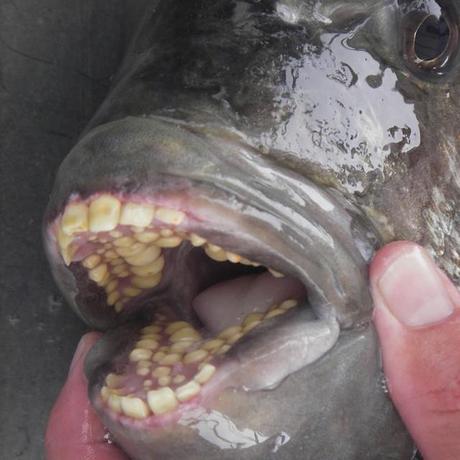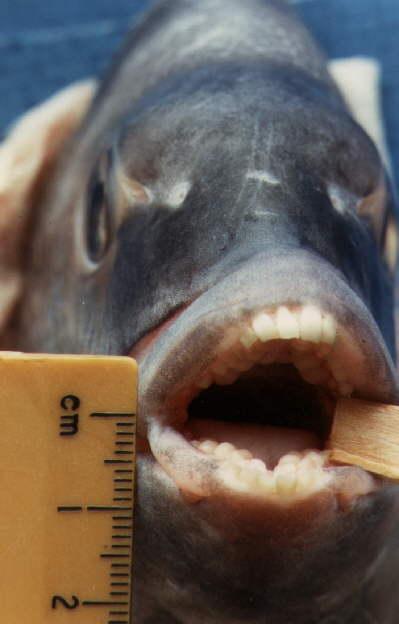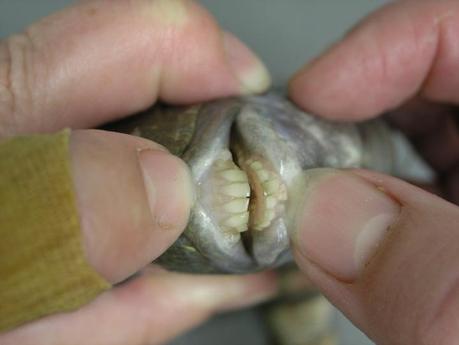 l to r: goldfish, trout, shark
l to r: goldfish, trout, shark
Many fish, like the goldfish, have no teeth.
Some, like the trout, have tiny, barely visible serrated teeth.
Then there are the carnivorous predators, like the shark, with really sharp nasty-looking teeth.
But I’ve never seen a fish that — jeepers creepers! — has HUMAN teeth. Not just a few, but lots and lots of them, filling up its entire mouth!

Becky Crew writes for Scientific American, March 21, 2013, the sheepshead fish (Archosargus probatocephalus) have human teeth.
A common North American marine species that span from Cape Cod and Massachusetts through to Florida and the Gulf of Mexico to Brazil, sheepshead fish can grow to 36 inches in length and weigh up to 21 lbs.
They have 5 to 7 distinctive black, vertical bars running down their silvery bodies, which is why the sheepshead is also called the convict fish.

A fully-grown adult sheepshead has well-defined incisors sitting at the front of the jaw, and molars set in three rows in the upper jaw and two rows in the lower jaw. It has strong, heavy grinders set in the rear of the jaw too, which are particularly important for crushing the shells of its prey. As with humans, this unique combination of teeth helps the sheepshead process a wide-ranging, omnivorous diet consisting of a variety of vertebrates, invertebrates and some plant material.


When they’re young, sheepshead fish eat marine worms, bryozoan ‘moss animals’ and pretty much anything soft-bodied they can catch in the seagrasses. Although thick, sharp teeth begin to appear when a sheepshead is just 0.18″ long, it will have to wait until it’s about half an inch long before all the incisors have come in and the back teeth begin to develop into adult molars.
Once they reach around 2″ in length, the sheepshead advances to eating more robust, armored prey such as echinoderms, barnacles, clams, crabs and oysters, using their highly specialized teeth. During this stage, its jaw musculature is also developing, and this keeps improving right through to old age.
It’s not clear why the sheepshead is called the sheepshead, but it’s been suggested that it refers to how its teeth look like sheep’s teeth. Another suggestion is that the name relates to their silhouette.
Here’s a video of some fishermen with a live sheepshead:
~Eowyn

